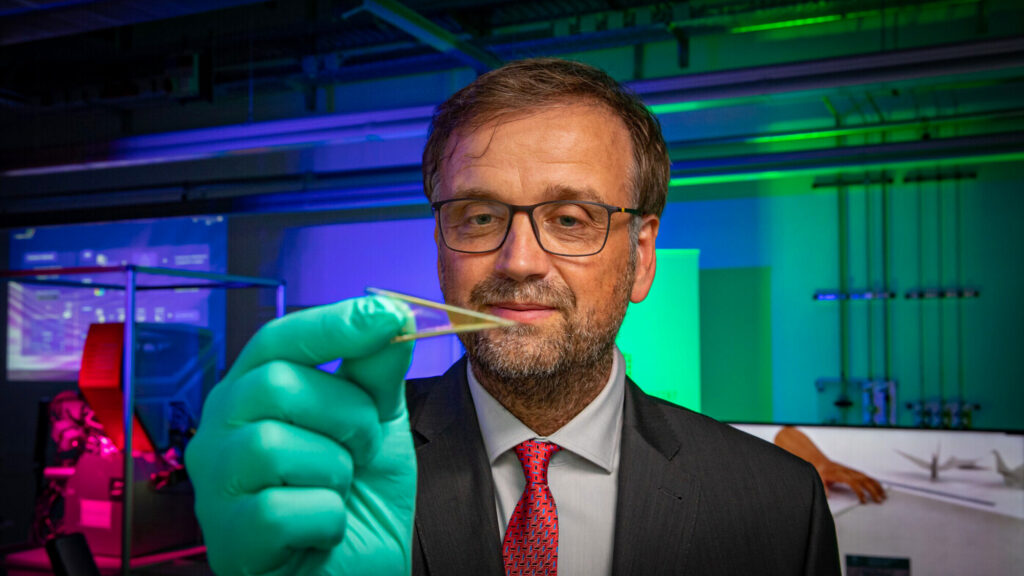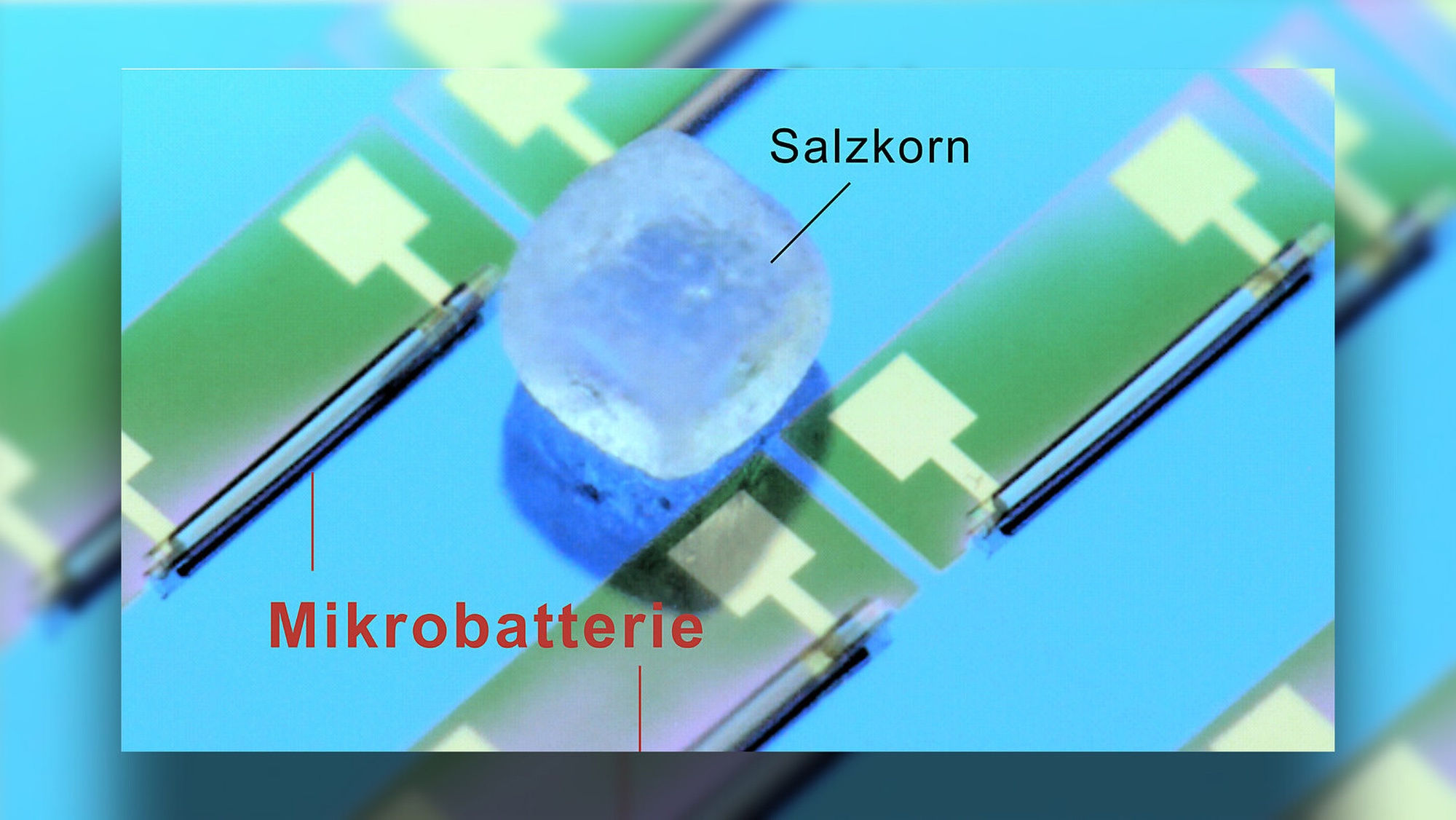What is apparently the world’s smallest battery, which is the size of a grain of salt and which can be used to power surgical implants and micro-robots, has been developed by an international team of researchers.
The battery prototype was made by a research team consisting of scientists from the Chemnitz University of Technology (TU Chemnitz) and the Leibniz Institute for Solid State and Materials Research (IFW Dresden) in Germany, along with the Changchun Institute of Applied Chemistry in China.
The scientists are certain that their invention, which is only 1.10 by 1.69 by 0.15 millimetres in size, could soon be used to power miniaturised medical implants, micro-robots and ultra-flexible electronics.
Scientific director of the Center for Materials, Architectures and Integration of Nanomembranes (MAIN) at TU Chemnitz and lead researcher Dr Oliver G. Schmidt told Newsflash: “There is still a huge optimisation potential for this technology, so that in the future we can expect significantly more powerful micro-accumulators.”

(Jacob Muller/Newsflash)
Another researcher involved in the project, Dr Minshen Zhu, said: “Our results show encouraging energy storage performance on a sub-square millimetre scale.”
The scientists reported that their aim was to design a battery that can be integrated directly into a chip without taking up more than one square millimetre of space and which has a minimum energy density of 100 microwatt hours per square centimetre.
They did this by transferring the winding of conductor and electrode strips to the microscale, which is a process currently used by Tesla to produce the batteries for its electric cars.
TU Chemnitz explained more about the method in a press release, which states: “This is where the so-called Swiss roll or micro-origami process is used. A stressed layer system is created by alternately depositing a few thin layers of polymeric, metallic and dielectric materials on a wafer surface.

(Jacob Muller/Newsflash)
“This mechanical tension can be released by detaching the thin layers in a targeted manner, so that the layers unroll themselves into a Swiss-Roll architecture. So no external forces have to be applied to create the wound batteries.”
According to the university, this method enabled the researchers to produce sub-millimetric rechargeable micro-batteries, which have the potential to power the world’s smallest computer chips for up to 10 hours.
The study was published in the specialist journal ‘Advanced Energy Materials’ on 9th February 2022.
To find out more about the author, editor or agency that supplied this story – please click below.
Story By: Georgina Jadikovska, Sub-Editor: William McGee, Agency: Newsflash
The Ananova page is created by and dedicated to professional, independent freelance journalists. It is a place for us to showcase our work. When our news is sold to our media partners, we will include the link here.




